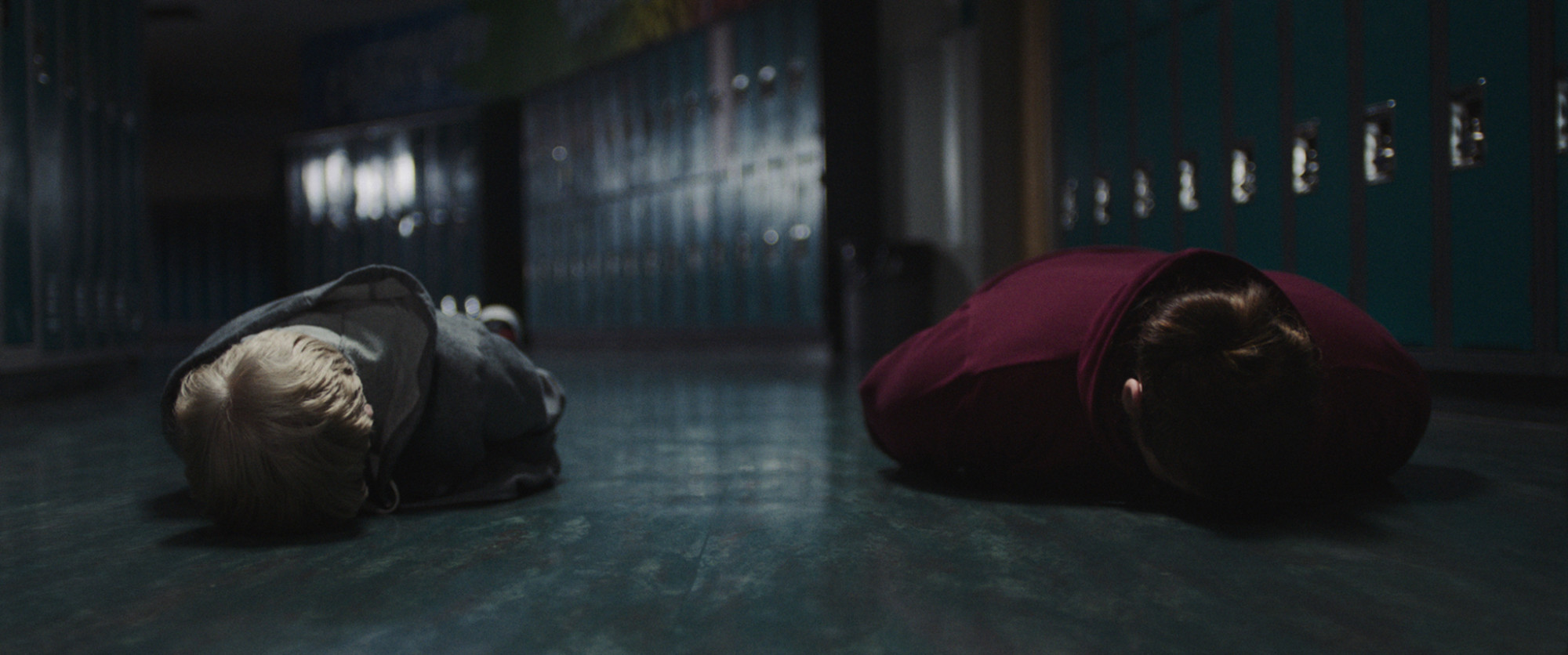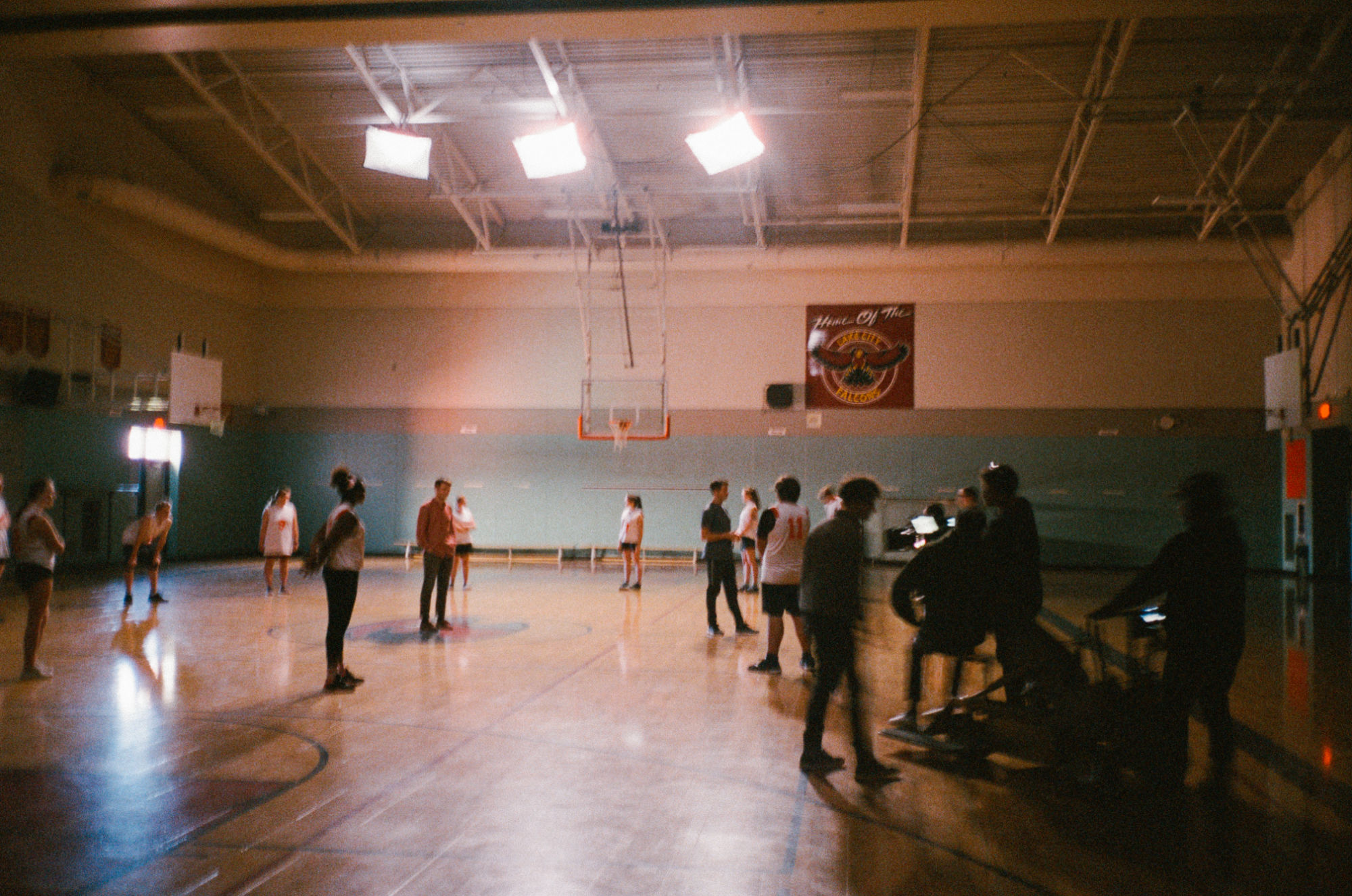
A return to the physical and mental space of folk artist Sam Tudor’s high school days, eerie music video Joseph in the Bathroom from Canadian filmmaker Lucas Hrubizna, confronts the cruel indifference experienced by those seemingly faceless students who make their ignored ways through the halls. A promo which grabbed a well warranted Vimeo Best of the Month Staff Pick, DN invited Lucas to explain how the song’s evocative lyrics provided the narrative backbone and why his self-initiated interest in VFX empowered him to expand the creative boundaries of the concept to their full potential.
Sam Tudor and I met while attending film school in Vancouver and soon after we graduated, I began to develop visuals for his music. Joseph in the Bathroom is the third in a trilogy of collaborations between Sam and I for his album Quotidian Dream (see New Apartment and Truthful). To produce the video, we were awarded a grant from the Canada Council for the Arts.
Joseph in the Bathroom is an extremely personal, moral homecoming for the Sam. In the song, he recalls the dark social realities of his small-town high school with newfound clarity. Sam remembers two specific characters on the social fringes, Joseph and Autumn, and paints a dreamlike return to the school where he was once indifferent to their invisibility. When I listened to this song for the first time I immediately connected with it. Visuals came flooding into my head. Both Sam and I went to small high schools in Western Canada and I could deeply feel the spaces and characters he described. I felt I was being pulled through his school in a dream and forced to float in the disquieting darkness of it all.

The concept behind the video is for the most part in lockstep with the lyrical content of the song. Because Sam baked such a clear sense of narrative into his words, I felt my visual interpretation had to treat the lyrics like a script. The story is clearly divided into three parts: Joseph’s story, Autumn’s story and then the final confrontation between Sam and two teenagers in the gym. My interpretation had to answer the question of how we move from act to act in the less narratively-specific choruses, and I also felt I had to build visuals on top of the words that would capture the sense of alienation so clear in Sam’s tone.
When I listened to this song for the first time I immediately connected with it. Visuals came flooding into my head.
I began to envision the school as a physical embodiment of Sam’s mind and the way we move through it as his stream of conscious thought. As we drift through the building, the vacant bodies of both teenagers slither lifelessly along the ground, pulled from room to room by an invisible force. They have no agency within the context of Sam’s headspace. They exist in his mind as faceless objects, seemingly part of the school itself. While this idea of the characters being physically one with the building informed most of the imagery, I also drew major inspiration from René Magritte’s painting Not to Be Reproduced.

In order to confront the past head-on and to capture the specific atmosphere of the track, we designed a production process that had us return to Sam’s actual high school in Northern British Columbia. We piled our crew into a convoy in Vancouver and headed far north to his hometown of Williams Lake, where the entirety of the piece was shot. By returning to the school and casting only current students and non-actors from the local community, I had a direct line into Sam’s words and could live through the song as we shot. This was not only important for the final texture of the piece, but I think it really solidified the conceptual basis of revisiting a time and place with a new outlook and a deeper sense of empathy. In a sense, the production process forced Sam and the rest of us to do so.
I chose to approach this video with a very specific shot plan and tight shooting style because it had to fit so tightly to Sam’s lyrics. At the end of the day, only one thing we shot didn’t make it into the cut. On the one hand, this was freeing as I could envision the entire video second by second, but it also created a pressure to nail each shot as editing wouldn’t allow for much flexibility.




I wanted the audience to feel themselves being constantly pulled towards something.
To create the continual flow that I felt was needed to mimic Sam’s stream of consciousness, the camera, until the very last shot, is in constant motion. I wanted the audience to feel themselves being constantly pulled towards something. Our Cinematographer Blake Davey achieved this using an Alexa Mini mounted on a Fisher dolly, allowing for really smooth linear moves that quietly float us through the space. Blake and I talked about how lighting the video subtly, with mostly natural sources, would ground the more surreal elements of the piece and sell their emotive qualities. Too much obvious style and the weight of the subject matter may have been lost.




Almost all of the effects work was done practically with some rig removal in post. The exceptions to this are three composite shots that wouldn’t have been possible to achieve practically. I’ve taught myself to do VFX work over the past few years, partially out of general interest, but also to blow the doors open on my creative imagination. Understanding the mechanics of visual effects allowed me to build a concept that was feasible, but far exceeded the creative boundaries I would have had without.


